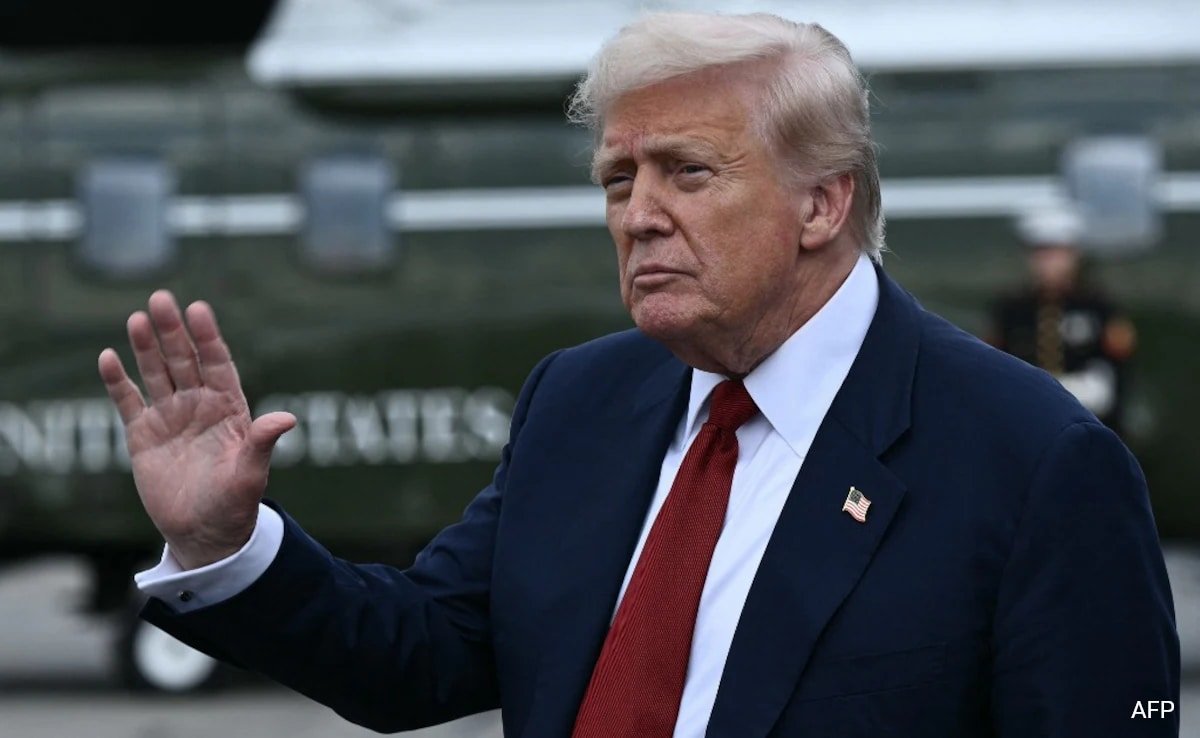Recent Posts
Trump Threatens 250% Tariff on Indian Pharma Imports

Washington, D.C. – In a dramatic escalation of trade tensions, U.S. President Donald Trump on Tuesday threatened to impose tariffs as high as 250% on pharmaceutical imports, a move that could significantly disrupt India’s multibillion-dollar drug exports to the United States.
The announcement comes just months after the Trump administration launched a Section 232 national security investigation into pharmaceutical imports—a strategic maneuver that analysts say could pave the way for sweeping protectionist measures aimed at reshoring U.S. drug manufacturing.
“We’ll be announcing something very soon on pharmaceuticals,” President Trump said during a cabinet meeting. “We’re going to give people a year or a year and a half to come in. After that, if they have to bring pharmaceuticals into the country, they’re going to be tariffed at a very, very high rate—like 250%.”
Implications for Indian Pharma
India, which plays a critical role in supplying affordable medicines to the United States, stands to be one of the most affected by the proposed tariffs. According to the Pharmaceutical Export Promotion Council of India (Pharmexcil), Indian pharmaceutical exports to the U.S. accounted for 31% of the country’s total outbound drug shipments in FY 2024–25. India exported more than $30 billion worth of pharmaceutical products globally during this period.
As per the Embassy of India in Washington, D.C., Indian companies are responsible for producing approximately 40% of the generic medications available in the U.S. market. These companies also maintain manufacturing facilities in about 14 locations across the United States, underscoring the depth of bilateral integration in the pharma supply chain.
Industry Reaction and Concerns
Industry stakeholders in both India and the U.S. have voiced strong concerns over the potential fallout from steep tariffs.
“Generic medicines account for 90% of all prescriptions in the U.S., yet represent just 1.2% of total healthcare costs,” said Kathleen Jaeger, U.S. spokesperson for the Indian Pharmaceutical Alliance, in April, following the launch of the Section 232 probe. “Indian manufacturers play a critical role in treating conditions like hypertension, pain, and cardiovascular disease. Tariffs at this scale could trigger widespread drug shortages, increase U.S. dependence on Chinese suppliers, and undermine investment plans by Indian companies in America.”
Jaeger emphasized that the imposition of tariffs would harm not only patients and healthcare providers but also compromise national security—a key issue cited by the Trump administration in justifying the investigation.
“Adding tariffs on America’s affordable medicine partners in India would make it even worse—for patients, the healthcare system, and for America’s national security,” she said.
A pharmaceutical exporter based in Himachal Pradesh, speaking on condition of anonymity, echoed the concerns:
“Such a massive tariff increase has not yet been officially implemented. But if it does go into effect, we would be left with no choice but to halt supplies to the U.S. market. Unfortunately, it is the American patients who will suffer the most.”
Section 232 Investigation Nears Conclusion
The Trump administration initiated the Section 232 investigation into pharmaceutical imports in April 2025, citing national security concerns. Section 232 of the Trade Expansion Act of 1962 authorizes the U.S. government to impose trade barriers on imports that are found to threaten national security.
Although pharmaceuticals were initially excluded from the reciprocal tariffs introduced by the administration earlier this year, the ongoing investigation signaled that the sector remained under scrutiny.
U.S. Commerce Secretary Howard Lutnick confirmed on Tuesday that the Department of Commerce expects to complete its review by the end of the month. The findings will inform President Trump’s final decision regarding tariff imposition.
“We are studying the impacts of pharmaceutical imports carefully and expect to conclude the study by month-end. Once the analysis is complete, the President will make a final determination on tariff actions,” said Lutnick.
He also noted that pharmaceutical manufacturers may be given a transition period of up to 18 months to establish or expand domestic manufacturing before the new tariffs are enforced.
Strategic and Economic Ramifications
Experts warn that if implemented, the 250% tariff could not only disrupt the U.S. pharmaceutical supply chain but also lead to diplomatic tensions with key trading partners like India.
India’s pharmaceutical sector, often dubbed the “pharmacy of the world,” has long been a cornerstone of affordable healthcare in both developed and developing nations. The proposed U.S. tariffs could impact India’s role in global drug supply chains and undermine efforts to enhance healthcare accessibility.
At the same time, such a move could incentivize pharmaceutical companies to divert exports to other markets, particularly Europe, Southeast Asia, and Africa, where demand for generics continues to rise.
From the American perspective, the administration’s hardline stance may be aimed at reducing dependency on foreign imports, boosting domestic manufacturing, and ensuring secure supply chains—particularly in the wake of the COVID-19 pandemic and rising geopolitical tensions.
However, public health advocates and industry insiders remain skeptical about the timing and feasibility of such an overhaul.
“The idea of reducing import dependence is valid in principle,” said a U.S.-based healthcare policy analyst. “But sudden and extreme tariff hikes could destabilize the market and backfire politically, especially if drug prices rise or shortages intensify.”
Looking Ahead
The Trump administration’s decision will hinge on the final recommendations from the Commerce Department’s investigation. If the 250% tariffs are formally enacted, it could mark a major turning point in U.S.-India pharmaceutical trade relations and force Indian exporters to recalibrate their global strategies.
Until then, Indian pharma firms are closely watching Washington for clarity and contingency planning.
For now, the threat looms large, and both industry stakeholders and policymakers await the final verdict on one of the most consequential trade measures in the recent history of global pharmaceuticals.
- 200% pharmaceutical import tariff
- Biden vs Trump trade policy
- Drug price inflation USA
- generic drug import tariffs
- impact of US tariffs on Indian pharma
- India drug exports to US
- India pharma response to tariffs
- India US pharma trade
- Indian drug makers in America
- Indian pharma companies in US
- Indian pharmaceutical exports
- Pharma supply chain disruption
- pharma tariffs and national security
- Section 232 investigation pharma
- Trump 2025 trade policy
- Trump pharma tariff
- Trump pharmaceutical trade policy
- Trump tariff on Indian drugs
- US dependence on Indian generics
- US drug shortage 2025
- US generic drug tariffs
- US healthcare costs 2025
- US-India trade tensions
Recent Posts
Categories
- Actor4
- Actress7
- Bank4
- Biography2
- Bollywood2
- Business10
- Company8
- cricket2
- Economy21
- Education2
- Entertainment30
- External Affairs Defence Security1
- Football1
- Health1
- India43
- Industry6
- lifestyle1
- maharashtra1
- Politicians13
- Politics27
- Press Release59
- Social8
- Sports23
- Stock Marekt17
- Technology13
- Tollywood1
- World35
Related Articles
Israel, Hamas Accused of Starving: UN, IDF Trade Blame
Since October 7, 2023, Gaza has endured one of the most severe...
ByNewsium DeskAugust 6, 2025Trump Slaps 25% Tariff on India, Still Calls It a Friend
Introduction In a bold and controversial move, former U.S. President Donald Trump...
ByNewsium DeskJuly 30, 2025Russia’s Overnight Missile, Drone Strikes Devastate Lutsk
Introduction In the latest escalation of the Russia-Ukraine conflict, the western Ukrainian...
ByNewsium DeskJuly 9, 2025“Iran Loses Top Commanders in Israeli Strikes on Key Military Sites”
In an unprecedented escalation, Israel on 13 June 2025 launched a massive...
ByNewsium DeskJune 13, 2025













Leave a comment